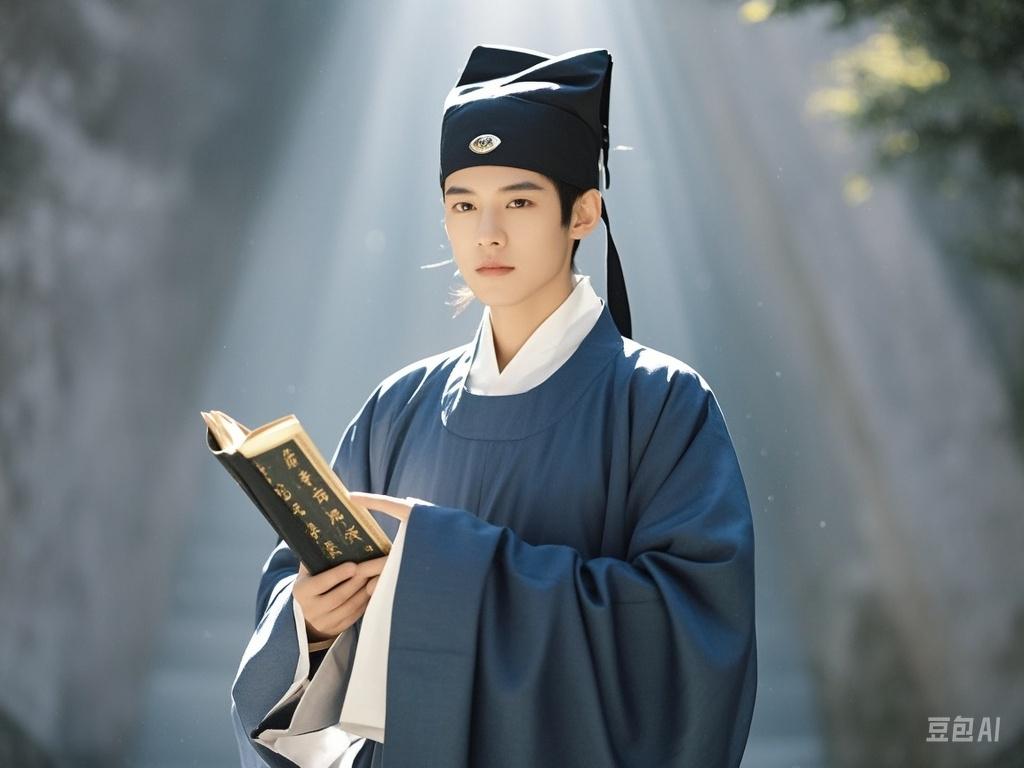Long ago, in an ancient Taoist temple nestled deep within the mountains, there lived a young Taoist practitioner named Changqing. Gifted with intelligence and a pure heart, he was cherished by his mentors in the temple. However, despite years of diligent cultivation, Changqing felt a lingering sense of uncertainty. Although he had studied many Taoist scriptures and mastered numerous practices, he lacked a tangible way to protect himself and others while bringing peace to their hearts and minds.
One day, as he browsed through the temple's vast collection of Taoist texts, he stumbled upon an ancient record discussing the unique role of jade in Taoist culture. Jade was more than just a precious gemstone; it symbolized the Taoist ideal of "harmony between heaven and humanity." Its serene aura was believed to purify the soul, ward off evil spirits, and bestow safety upon its wearer. Particularly, jade pieces imbued with Taoist symbols and wisdom carried mystical energy.
This discovery illuminated Changqing’s thoughts. He resolved to design and carve a jade pendant himself, one that could embody the wisdom and power of Taoism. This pendant would not only protect its wearer but also convey the Taoist philosophy of balance and harmony.
Deep Reflection and Creation
With newfound purpose, Changqing began a long period of meditation and study. Each day, he secluded himself in his chamber, immersing himself in the wisdom of Taoist texts to refine his design. He understood that crafting a jade pendant was not merely about physical skill but also about integrating spiritual insights.
Drawing inspiration from core Taoist concepts—yin and yang, the five elements, the eight trigrams, and the Taiji philosophy—Changqing envisioned a design that was simple yet profound. He chose to carve the jade into a circular pendant, symbolizing the Taoist idea of “heaven being round and earth being square,” representing completeness and unity.
Around the edges of the pendant, he meticulously inscribed intricate Taoist talismans, believed to channel divine energy. At its center, he carved the Taiji diagram, a representation of yin and yang in perfect harmony. “From Taiji comes two forces, from two forces come four phenomena, and from four phenomena come the eight trigrams,” he often whispered to himself as he worked. For him, the Taiji diagram was not just an image but a profound philosophy that encapsulated the dynamic balance and transformation of the universe.
The Pendant's Mystical Power
After weeks of tireless work, the jade pendant was finally complete on the night of a full moon. The sky was a deep canvas of stars, with the moon casting its silver light over the world. Changqing hung the pendant by the window to observe it under the moonlight. To his astonishment, the jade seemed to absorb the moonlight, glowing with a soft, ethereal radiance that was both tranquil and powerful.
In that moment, Changqing felt an indescribable sense of peace and unity, as though his heart was connected to the pendant and the cosmos beyond. He realized the jade was no longer a mere gemstone; it had transformed into a vessel of sacred Taoist power, capable of purifying negative energies and uplifting the spirit.
Changqing knew this pendant carried a profound spiritual significance. It embodied the Taoist principle of "effortless action" (wu wei), harmonizing with the natural order of the universe. It was a tool not only for protection but also for guiding its wearer toward inner peace and enlightenment.
Spreading Taoist Wisdom
Rather than keeping the pendant for himself, Changqing decided to share it with others in need. He placed the pendant in the temple’s main hall, where visitors could seek its blessings. He also began teaching people about its creation and the Taoist philosophy it represented.
Word of the pendant's power spread quickly. A merchant burdened by business troubles visited the temple, hoping to find solace. After receiving the pendant, he felt a newfound calmness and clarity, which helped him resolve his difficulties. A grieving widow, weighed down by loss, found hope and strength after wearing the pendant. Even a chronically ill man, after carrying the pendant, experienced a steady recovery, regaining his vitality.
Each wearer reported profound changes, attributing the pendant’s protective energy to the Taoist wisdom it embodied. It not only shielded them from misfortune but also nurtured their hearts and minds, enabling them to overcome life’s challenges.
A Silent Legacy
Over time, Changqing’s jade pendant became a revered artifact in the temple, symbolizing the essence of Taoist culture. It attracted visitors from all walks of life, each seeking its blessings and the peace it promised. Through the pendant, many came to understand that jade was more than a material treasure—it was a spiritual bridge, connecting humanity to nature and the cosmos.
As the legend of the jade pendant spread, so did Changqing’s story. His name became synonymous with compassion and wisdom, and his creation became a timeless representation of Taoist teachings. To this day, the pendant remains a testament to the Taoist ideals of balance, harmony, and serenity, reminding all who encounter it to seek peace within themselves and the world around them.
The jade pendant, born from the depths of Changqing’s devotion, transcended its physical form. It carried the profound message of Taoist philosophy: that even amidst the chaos of the world, one can find tranquility by aligning with the natural flow of life. And this, truly, is the eternal charm of Taoist culture.



